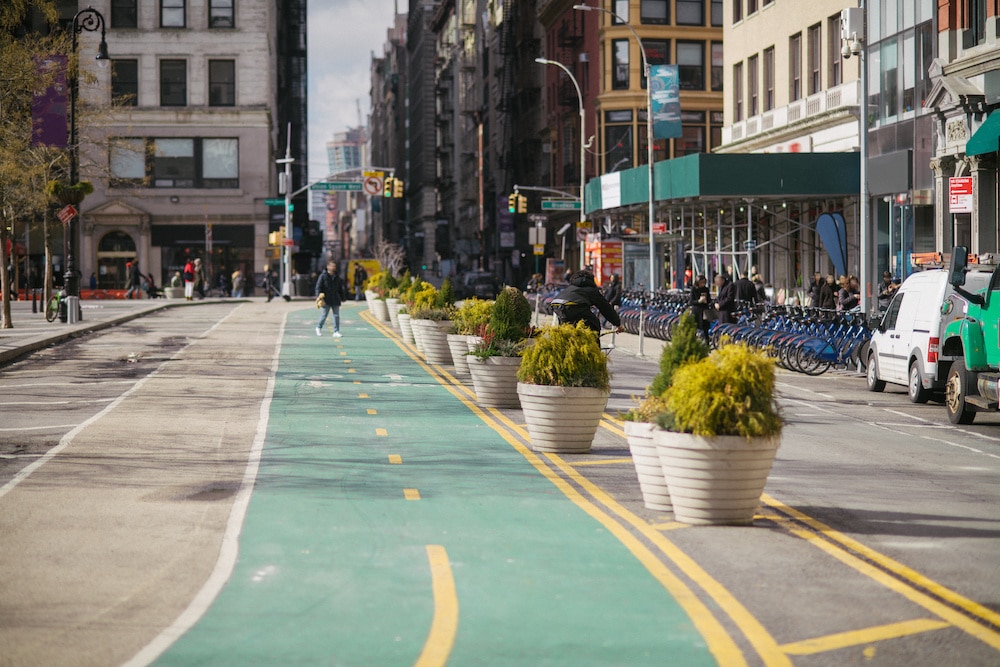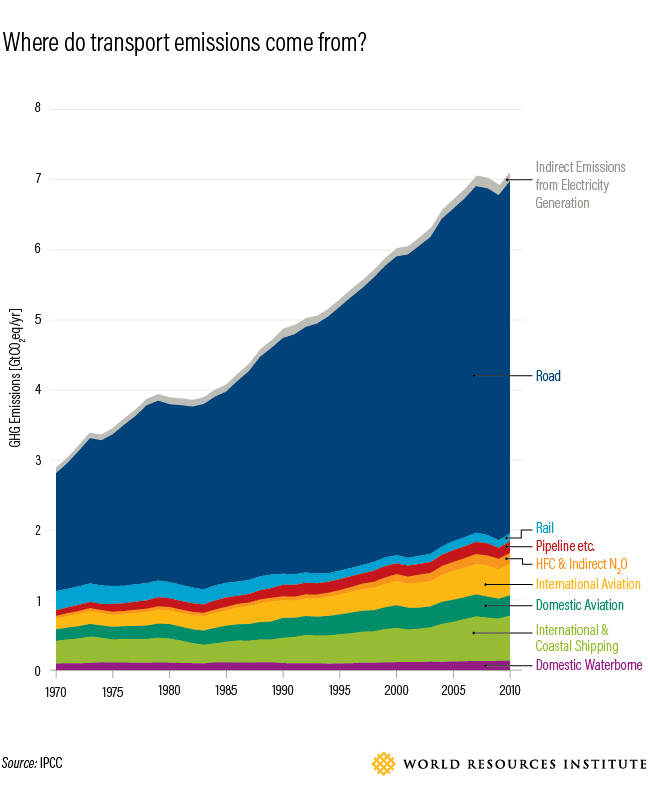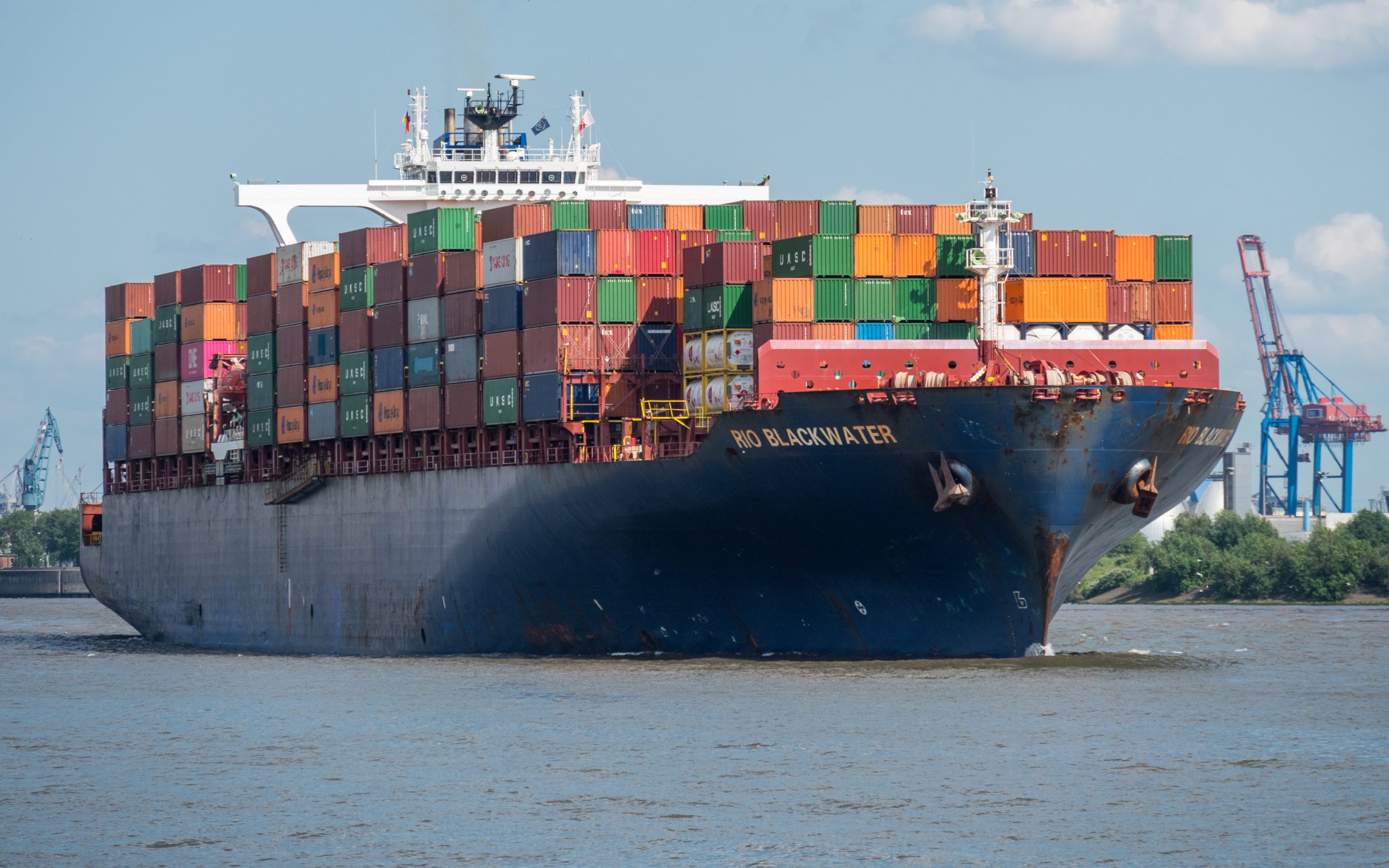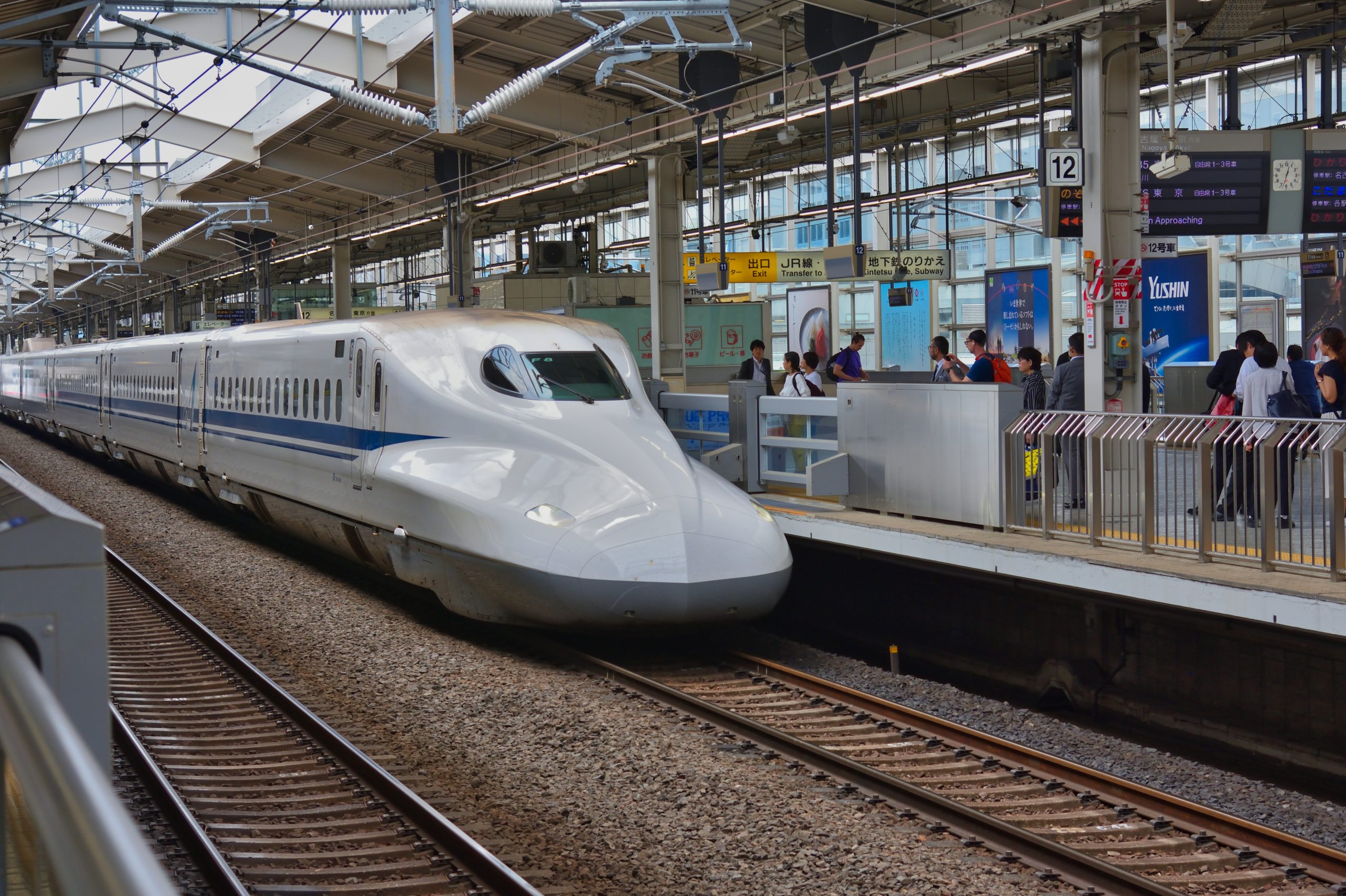This article is from the April 7, 2021, issue of Flip the Script, a weekly newsletter moving you from climate stress to clean energy action. Sign up here to get it in your inbox (and share the link with a friend).
We talk a lot about electric cars (for good reason), and how electrifying transport will help us slash the relentless rise in greenhouse gas emissions from transportation. Electrification is a critical piece in solving the climate puzzle, but it’s important to remember that we can’t just “electric car” our way out of the climate crisis and call it good.
A quick look at the numbers reveals the immense challenge we face. Globally, the transport sector—mainly road, rail, air, and marine transport—accounts for around a third of the world’s final energy consumption and for nearly a quarter of energy-related CO2 emissions. Still today, we depend on oil and petroleum products to meet a whopping 95 percent of our transport energy needs. Despite the important shift toward electric mobility, so far only around 1 percent of transport activity worldwide is powered by electricity (most of it non-renewable). Put simply, the transport sector is a huge fossil fuel guzzler, and we need all-hands-on-deck to mitigate its growing impact.
There’s literally no way to get to a livable, low-carbon, clean energy future without making changes to how we move ourselves and our stuff around. But at the current pace, any improvements we’re making in vehicle efficiency are more than offset by increases in the overall volume of travel, and in growing sales of larger, heavier vehicles (like SUVs). To get to zero emissions, we need to move faster in tackling the highest-emitting culprits, including privately owned cars and heavy-duty trucks, as well as aviation and shipping.
So how do we do it? Here are some of the promising “other” ways to address rising transportation emissions, many of which complement the electric revolution.
How to approach things: “Avoid-Shift-Improve”
A helpful way to bucket the many ways we can tackle transport emissions is the Avoid–Shift–Improve framework. The idea is to prioritize those strategies that “avoid” the need for motorized travel to begin with, followed by measures that support the “shift” to less carbon-intensive modes (public transit, car- and ride-sharing, walking and biking, and low-carbon freight). As much as 40 to 60 percent of the needed emission reductions can be achieved through “avoid” and “shift” strategies, including policies that limit vehicle traffic (like road pricing) and that incentivize travelers to use more efficient transport (such as creating low-emission zones in city centers). The rest of the cuts can be achieved through critical “improve” strategies, like efficient vehicle design and clean energy tech (including electric mobility). According to Project Drawdown, electric cars are the second most impactful strategy in transportation—after public transit—to slash carbon emissions.

Planning sustainable cities and managing transport demand
Key to supporting the types of “avoid” strategies that lead to reduced motorized travel is better city planning and building more livable urban communities. Here, the focus is less on supporting the movement of vehicles, and more on improving access for both people and goods through smart urban design and land use. Solutions include: remote work and carpooling; “multi-modal” planning (offering an integrated network of transport options); “complete” streets that support safe access for users regardless of how they’re traveling; and transit-oriented development and 15-minute cities, which reduce travel distances by integrating people, buildings, services, etc. All of these efforts would incentivize people to avoid driving and enable them to have cheaper, easier, and safer access to alternative transportation modes like public transit, biking, and walking (thus supporting the “shift” measures that are also needed to reduce emissions).
Rejiggering urban mobility through public transit
Critical to the shift away from high-carbon transport is building more high-quality public transport, which can move people much more efficiently than private cars. This includes more efficient (and increasingly electrified) urban rail, i.e., subways and streetcars, as well as cost-effective bus rapid transit, or public buses that travel in dedicated lanes so they can maintain a timely, set schedule. According to Project Drawdown, prioritizing public transit can bring about the biggest emission reductions from the entire transportation sector by 2050. Unfortunately, public transit is on the decline worldwide (and COVID-19 hasn’t helped), even though the benefits are clear: fewer road accidents, more equitable access to transport, and overall reductions in both congestion and emissions.
More efficient cars and trucks
Also key to reducing emissions from transportation is improving the efficiency of all those gas vehicles that can’t immediately be electrified, especially passenger cars and heavy trucks. To maximize emission reductions, countries need to adopt stricter fuel efficiency standards for internal combustion engine vehicles, and eventually to phase out these vehicles altogether in favor of electric and other vehicles that have zero tailpipe emissions. In the U.S., heavy-duty diesel vehicles account for only around 4 percent of vehicles but consume more than 25 percent of all fuel. Options for boosting efficiency include retrofitting fleets to be more aerodynamic and to use anti-idling and automatic cruise-control devices, as well as designing new zero-emission models. Overall, Project Drawdown lists “efficient trucks” as the third biggest transport-related solution for reducing emissions. However, improving efficiency alone won’t cut overall energy use in transport.
Tackling aviation emissions
Another biggie is tackling air travel. Pre-COVID, commercial passenger and freight aviation contributed around 2.8 percent of energy-related CO2 emissions, and emissions from air travel were rising rapidly. Project Drawdown lists “efficient aviation” as the fourth biggest transport-related solution for cutting emissions; however, the soaring demand for air travel has offset overall gains in efficiency from innovations like improved engine designs and lighter-weight materials. Additional solutions for reducing aviation emissions include retiring older aircraft, using fuel-saving practices, and scaling up the use of sustainable aviation fuels (as the newly unveiled Aerion AS3 airliner aims to do). Shifting consumer behavior (i.e., flying less) is also key to emission cuts: in Europe, rising climate awareness has led more people to replace short-haul flights with trips via high-speed rail.
Super-efficient shipping
Anyone who followed the recent saga of the Ever Given, the massive container ship stuck for nearly a week in the Suez Canal, has an inkling of the enormous scale of maritime shipping, which accounts for more than 80 percent of global trade by volume. Shipping currently contributes around 3 percent of global greenhouse gas emissions, but its climate impact continues to grow. Solutions for decarbonizing shipping include developing more energy-efficient vessels (with better hydrodynamics and fuel-saving designs), using slower operating speeds, and switching to low-carbon fuels (like biofuels or electricity-based hydrogen). In 2018, the International Maritime Organization adopted a goal of at least halving shipping’s emissions by 2050 (from 2008 levels), but progress in this area remains slow.
Revolutionizing rail
Last week, President Biden released a massive infrastructure proposal that included a call for an $80 billion investment in U.S. passenger rail. This would be a win-win and reflects the growing global interest in rail transport, including both high-speed inter-city rail and rail freight, which has much lower emissions and energy use than road freight. Globally, rail is the most energy efficient transport mode, and railway emissions have actually declined as train designs have improved and as more rail corridors are powered by electricity. Rail is by far the most electrified transport mode (at around 40 percent), with a growing share of this electricity coming from renewable sources. High-speed rail is considered a key solution to shift passengers away from air travel, since it’s around 3.4 times less polluting than flying.
Moving forward
Reducing transport emissions is a massive challenge, and it’s clear that transitioning to low-carbon transport requires a multi-pronged suite of improvements. It’s not just about electrification, cleaner fuels, and vehicle efficiency, but also about how we build our cities, manage transport demand, and improve overall access for people and goods. In other words, the broader “avoid” and “shift” measures are equally important as technology-based “improve” strategies, and they need to be prioritized as such. Electrifying transport will only be effective if it’s understood to be part of a broader shift toward more efficient, integrated, and low-carbon ways of moving both people and goods around the planet.




















